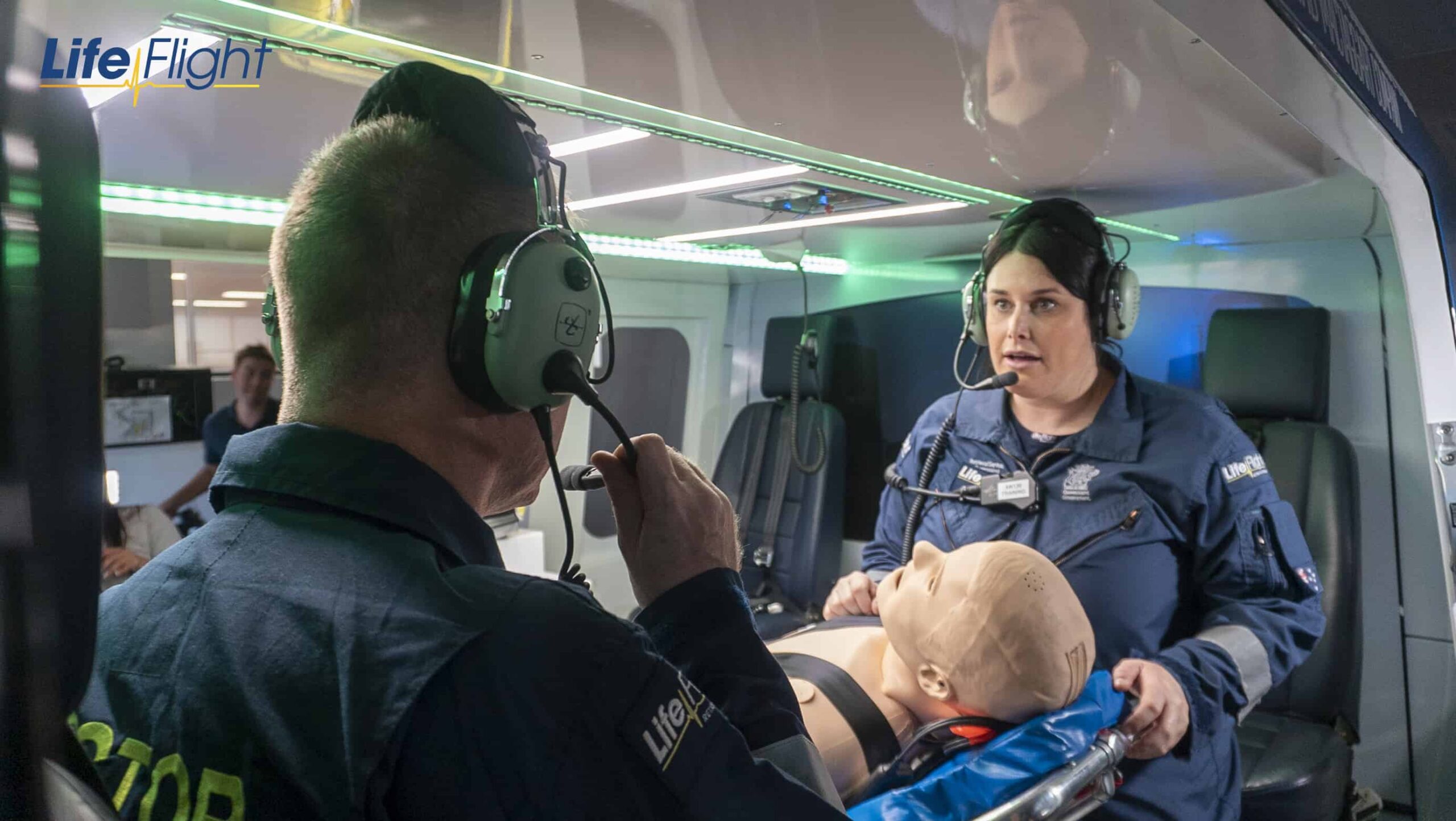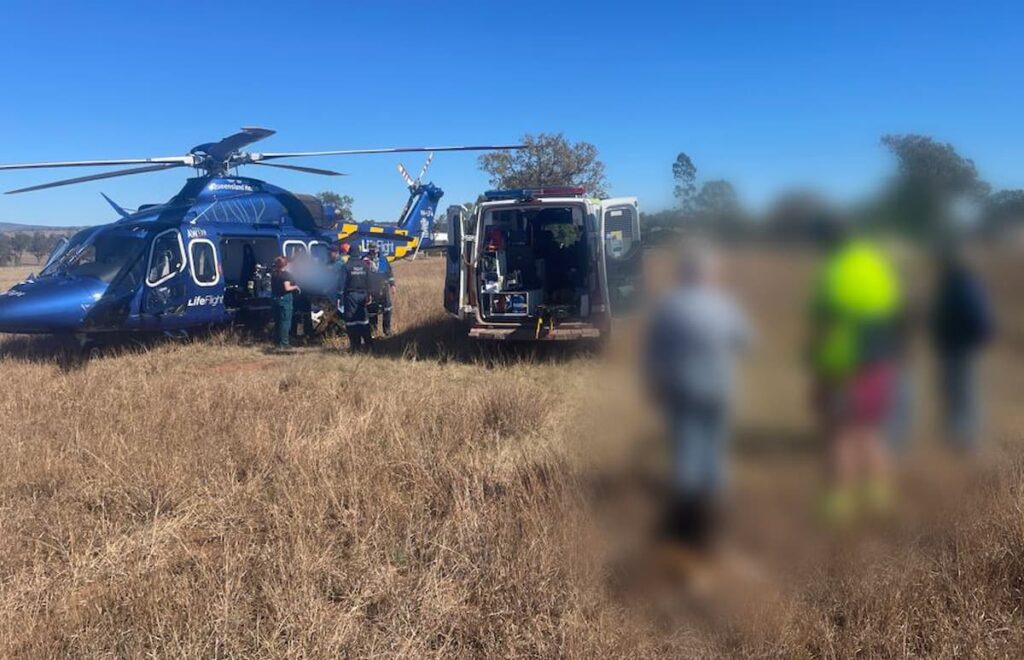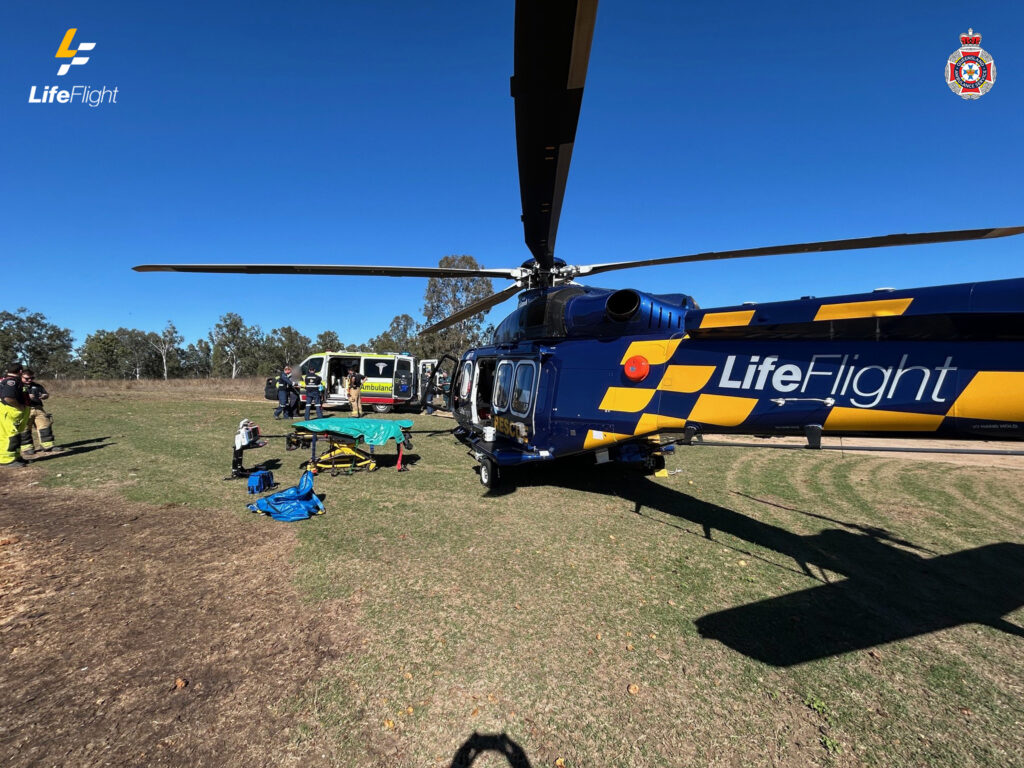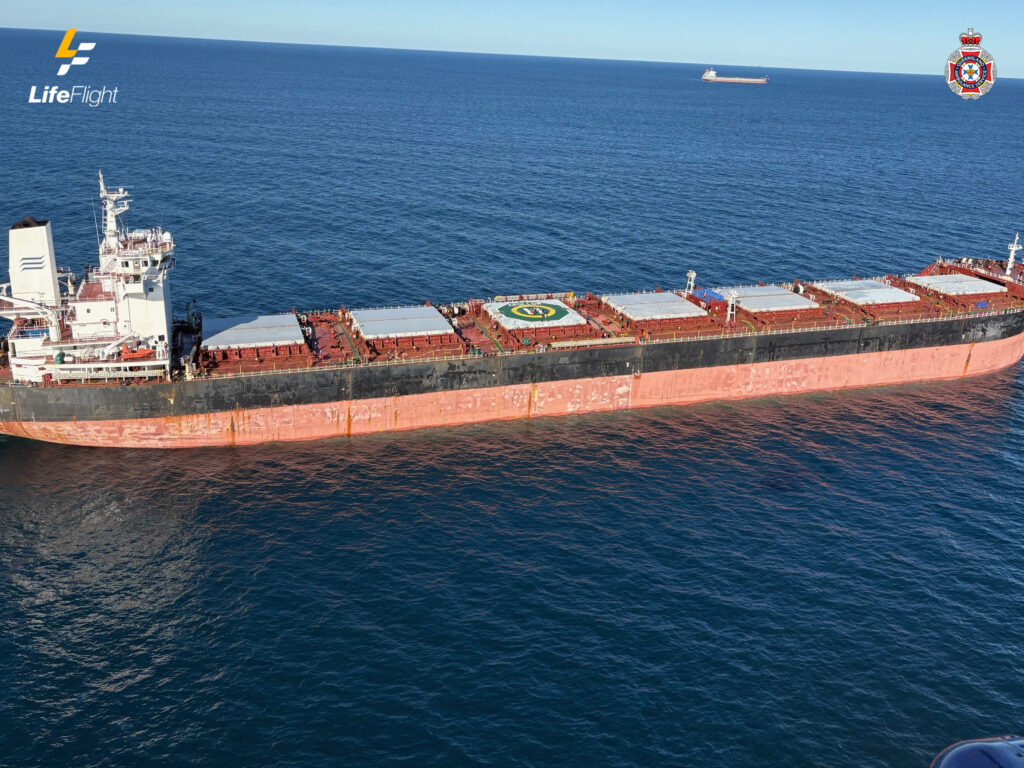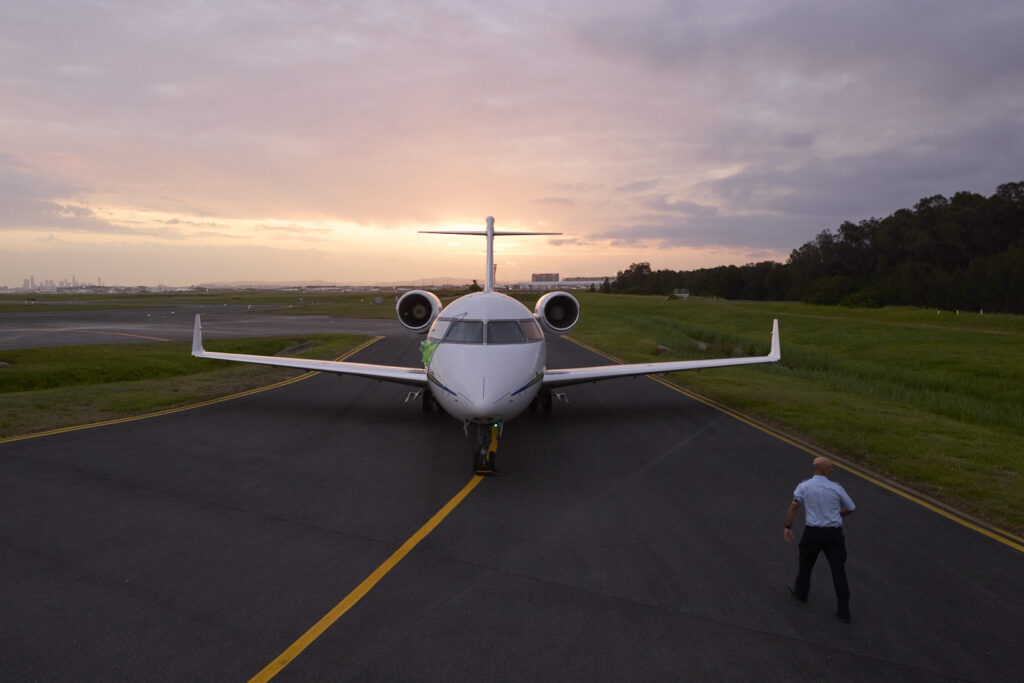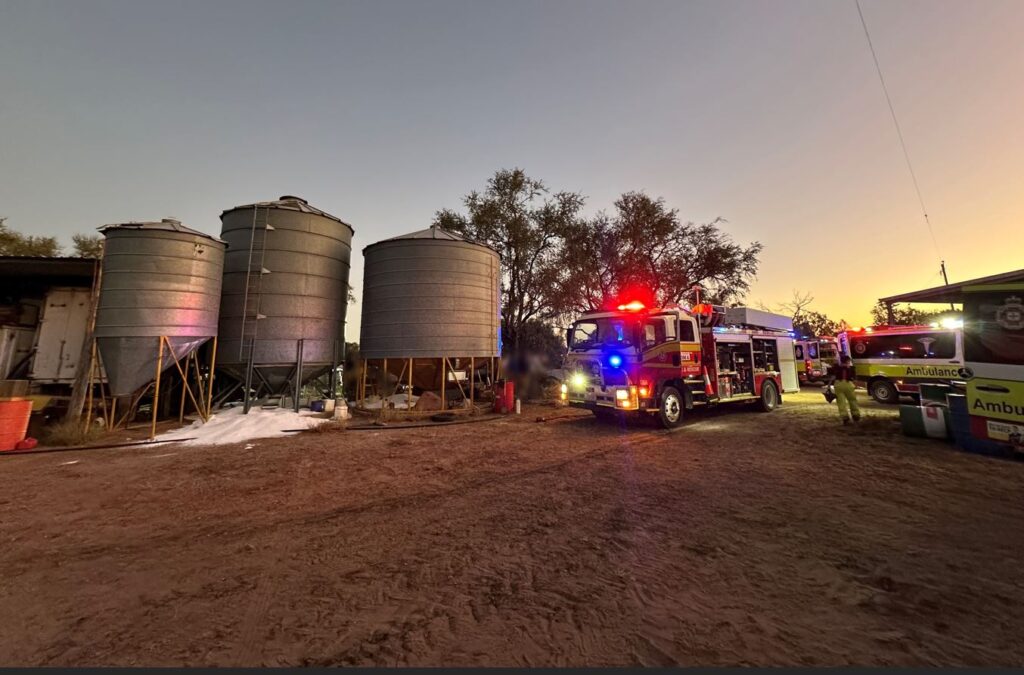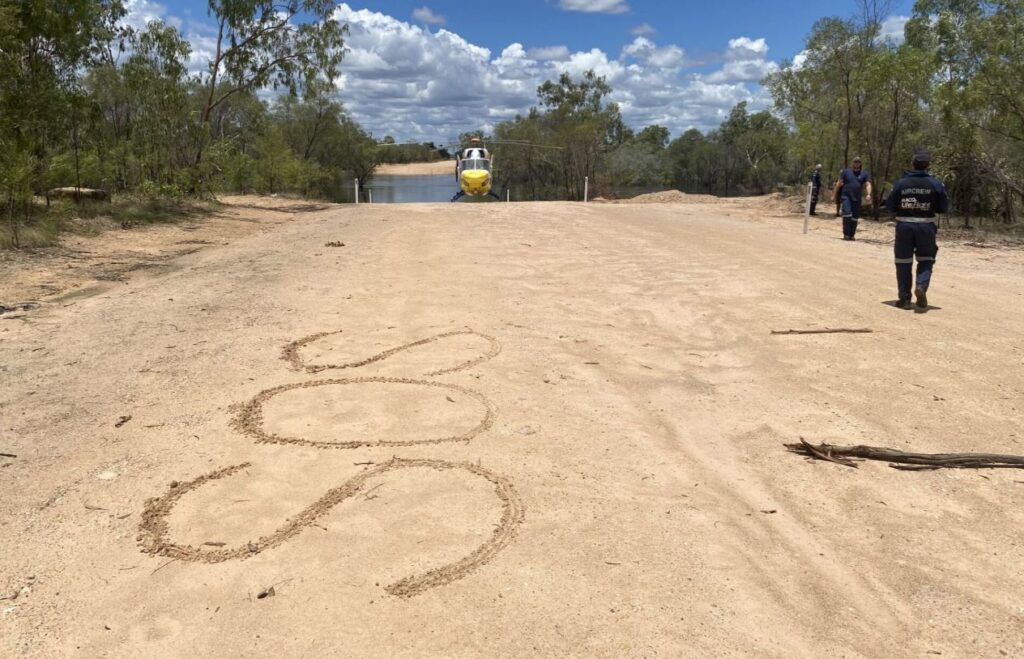A new virtual reality crew simulator is transforming the way RACQ LifeFlight Rescue aircrew officers train for lifesaving winch missions, allowing them to build their skills in scenarios which can’t be replicated in live helicopter training.
Crew members carry out winch missions played through a virtual reality helmet, combined with the physical elements built into the simulator – such as harnesses, the winch wire and winch controller pendant.
Chief Aircrew Officer and simulator instructor Simon Gray said the technology allows trainers to introduce elements and challenges, that could never be implemented when training in a real helicopter.
“In the real world we’re pretty much limited to low heights for our training, we can’t introduce things that would potentially be dangerous in the real world, whereas we can do all that here,” Mr Gray said.
“I can change the sea state from a nice calm mirrored surface to a Beaufort scale 5 gale, I can put lightning into the equation, I can bring the wind, I can get people to move.”
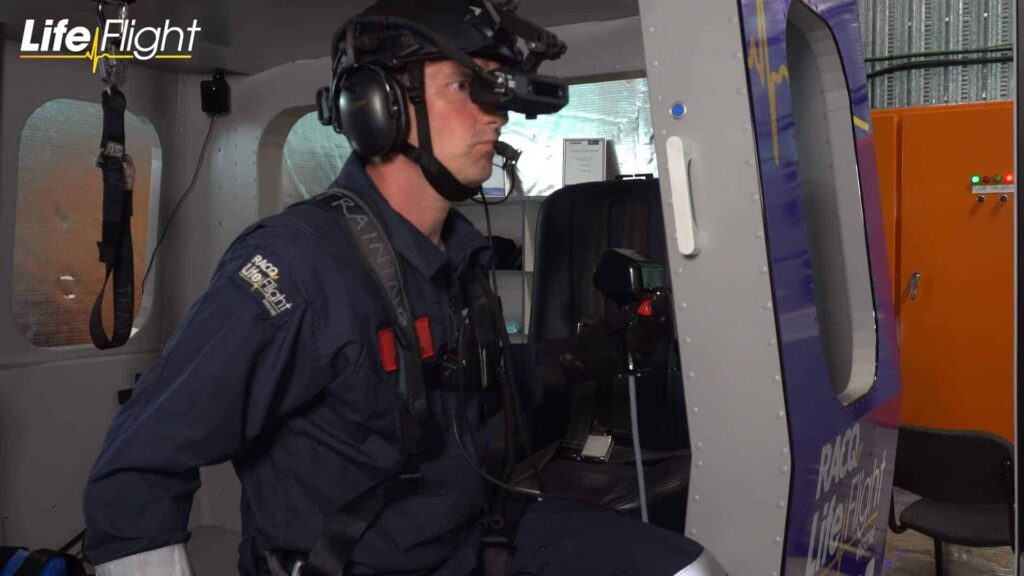
Aircrew officers, whose roles include operating the winch system from the aircraft cabin, say the experience is so realistic and the graphics are such high definition, that it’s easy to believe they’re in genuine, high-pressure situations.
“You wear a harness, you can put your gloves on, you have a headset on, you hear everything through the headset as you would for real, the winch cable runs through your fingers, sitting with the winch pendant in your hand also,” RACQ LifeFlight Rescue Aircrew Officer Greig Allan said.
“Without that harness you do get a sense that you might fall out the door if you’re not careful,” he said.
The equipment allows aircrew officers to train safely on the ground, saving the costs of flying hours and leaving rescue crews and choppers online for tasking.
“We don’t get a lot of time in the back of the aircraft in the cabin, because of the costs involved, so this really is going to allow us to develop our crewmen to the next level,” Mr Gray said.
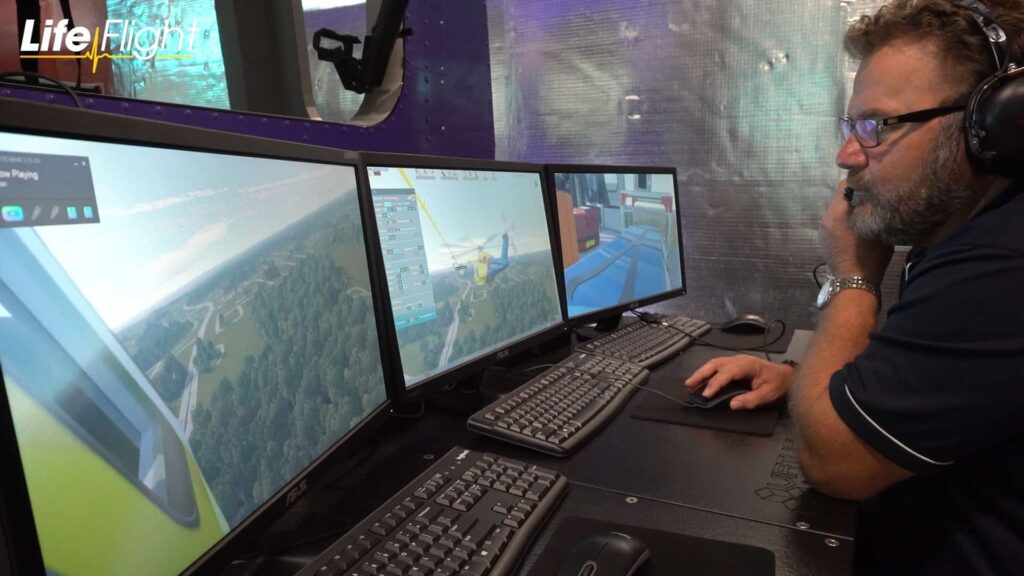
The simulator can be adjusted to model either an AW139 or Bell 412 helicopter, meaning aircrew officers from the LifeFlight Sunshine Coast, Toowoomba, Bundaberg and Roma bases can train in it.
Brisbane-based RACQ LifeFlight Rescue Flight Nurses and Roma-based LifeFlight Surat Gas Aeromedical Services (SGAS) Paramedics will also use the simulator, to train for negative clearance tests.
“Part of their role is, when the helicopter’s about to land, they’re basically looking around and helping make sure that it’s not going to land on anything or it’s not too close to anything,” Mr Gray said.
The simulator was funded by the generosity of more than 2000 donors, who gave to the LifeFlight Foundation’s Autumn Appeal.
The equipment completes a suite of simulators at the LifeFlight Training Academy and enhances the facility as a one-stop-shop for aeromedical training.
“We’ve currently got the Thales Level D Full Flight Simulator for our pilots, we’ve got our Medical Simulator for our doctors and this is the final string in our bow for aircrew officer training,” LifeFlight Training Academy Executive Manager Tim McGuire said.
